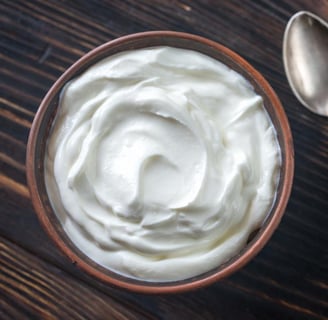Greek Yogurt: The Creamy, Nutritious Delight with a Rich History
Greek yogurt is more than just a breakfast staple—it's a creamy, protein-packed delight with a fascinating history and numerous health benefits. Whether eaten plain, drizzled with honey, or mixed with fruits and nuts, this thick and tangy dairy product has become a favorite worldwide.
FOOD CHRONICLES
Atulya Raj Anand
3/3/20252 min read


A Brief History of Greek Yogurt
Greek yogurt, also known as "strained yogurt," has origins dating back thousands of years. While it is closely associated with Greece, its history is intertwined with various ancient civilizations, including the Middle East and Central Asia. The technique of straining yogurt to remove excess whey was developed to create a thicker, more protein-rich product that could last longer without refrigeration. Greek farmers and herders refined this method, making it an essential part of Mediterranean diets.
Traditional Greek yogurt was first popularized in the Western world by brands like Fage and Chobani in the late 20th century. Since then, it has gained a reputation as a nutritious and versatile dairy product, loved for its rich texture and tangy flavor.
Taste and Experience
My recent experience with Greek yogurt was nothing short of delightful. The texture was luxuriously thick and creamy, far denser than regular yogurt. The taste? A perfect balance between tangy and slightly sweet, making it a great standalone snack or a versatile ingredient for smoothies, parfaits, and dressings. Paired with fresh berries and a drizzle of honey, it transformed into a refreshing and satisfying treat.
How Greek Yogurt is Made
Greek yogurt undergoes a unique straining process to remove whey, the liquid portion of milk. This results in a thicker and creamier consistency compared to regular yogurt. Here’s how it’s made:
Milk Heating: The milk is pasteurized and then allowed to cool.
Culturing: Live bacterial cultures are added to ferment the milk.
Straining: The yogurt is strained multiple times to remove whey, leaving behind a dense, protein-rich product.
Final Processing: The yogurt is then packaged and ready for consumption.
Nutritional Breakdown of Greek Yogurt
A typical serving of plain, full-fat Greek yogurt (170g or about 6 oz) contains:
Calories: 100-150 kcal
Protein: 15-20g
Carbohydrates: 5-10g
Fats: 4-9g
Calcium: Around 15% of the daily recommended intake
Probiotics: Beneficial bacteria that promote gut health
Greek yogurt is an excellent choice for those looking to increase their protein intake while keeping carbohydrates in check. It’s also packed with probiotics, which support digestion and boost immunity.
Best Ways to Enjoy Greek Yogurt
As a Breakfast Bowl: Topped with granola, nuts, and fruits.
In Smoothies: Adds creaminess and a protein boost.
As a Healthy Dip: Mixed with herbs and spices for a delicious dip.
In Baking: A great substitute for sour cream or butter in recipes.
As a Dessert: Drizzled with honey and paired with nuts or dark chocolate.
Final Thoughts
Greek yogurt is a powerhouse of nutrition, offering a perfect blend of taste, texture, and health benefits. Whether enjoyed as a snack, meal addition, or cooking ingredient, its versatility is unmatched. If you haven’t tried it yet, you’re missing out on one of the most nutritious and satisfying dairy products out there!
